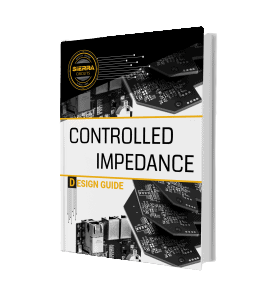Controlled Impedance Design Guide
This Controlled Impedance Design Guide empowers PCB designers with the knowledge required to develop high-speed PCBs.
As high-speed PCBs are more commonplace, high-performance design and manufacturing is quickly becoming the industry standard.
As a PCB designer, you need to know:
- What nets require controlled impedance
- How to avoid common mistakes when designing
- What to specify in the fabrication drawing
- How to design controlled impedance traces
- How to get a stack-up from your manufacturer
- If your manufacturer can meet your requirements
When do you need controlled impedance?
You will need controlled impedance for PCBs used in high-speed digital applications, such as RF communication, telecommunications, computing using signal frequencies above 100MHz high-speed signal processing, and high-quality video, such as DDR, HDMI, Gigabit Ethernet, etc.
At high-frequency, the signal traces on a PCB act like transmission lines, which have impedance at each point on the signal trace trajectory. If this impedance varies from one point to the next, there will be a signal reflection whose magnitude will depend on the difference between the two impedances.
In short—the larger the difference in impedance, the greater the reflection will be. In order to have an undistorted signal travel, it is essential that the PCB signal traces have a uniform controlled impedance to minimize signal distortions caused by reflections.
Also inside this Controlled Impedance Design Guide:
- Layer height, signal trace width and thickness, and dielectric material guidelines
- Stack-up design recommendations for controlled impedance
- Common design mistakes to avoid for controlled impedance





